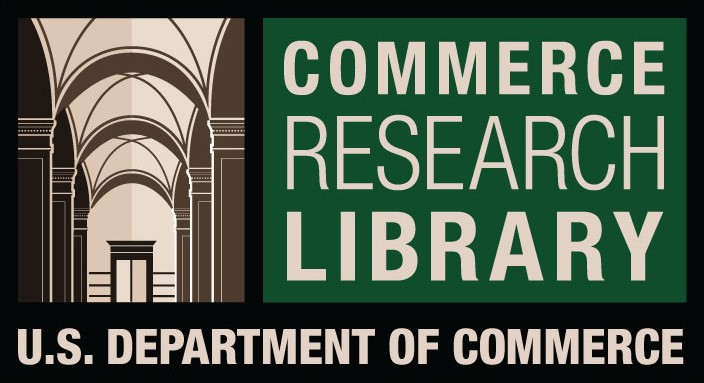The comparison of life satisfaction-spritual health and psychological resilience among woman with geometric meditation versus non- meditator
DOI:
https://doi.org/10.61841/01ryb989Keywords:
Geometric Meditation, Resilience, Life Satisfaction,, Spiritual Well-being,, Women, descriptive survey studyAbstract
The objective of study is to evaluate Geometric Meditation (GM) on psychological variables including psychological resilience, spiritual well-being and life satisfaction between practicing and non-practicing women. In this this cross-sectional comparative study, the intervention group was a sample (n=32) of women who participated in a three- hour- weekly training meditation class in Shiraz for eight months in order to learn practical and fundamental concept of GM. The instruments were Conner-Davidson (2003), Palutzin and Ellison's spiritual well-being (1983), and life satisfaction Diener (1985). According to the validity of the given questionnaire and its result, 32 participants were selected from both groups based on their age, education, and marital status. In order to examine the hypothesis, we used the Kolmogorov-Smirnov test, then independent T test was applied for evaluating resilience. GM programs show the evidence of resiliency increase (0.046<0.05). Using Mann-Whitney and Wilcoxon’s non-parametric test to analyze the variables of spiritual well-being and life satisfaction showed insignificant difference between them. However, intervention group compared to control group had a higher score mean in spiritual well-being and life satisfaction. In Conclusion, GM has a positive role in increasing resilience, life satisfaction and spiritual well-being, however, stronger studies are vital to be carried out.
Downloads
References
1. Agarwal, A., & Dixit, V. (2017). The role of meditation on mindful awareness and life satisfaction of adolescents. Journal of Psychosocial Research, 12(1), 59.
2. Alorani, O. I., & Alradaydeh, M. T. F. (2018). Spiritual well-being, perceived social support, and life satisfaction among university students. International Journal of Adolescence and Youth, 23(3), 291-298. https://doi.org/10.1080/02673843.2017.1352522
3. Anulipi A, Vidushi D (2017). The Role of Meditation on mindful Awareness and life Satisfaction of Adolescents. Journal of psychosocial Research. 2017; 12 (1): 59-70.
4. Bajaj, B., & Pande, N. (2016). Mediating role of resilience in the impact of mindfulness on life satisfaction and affect as indices of subjective well-being. Personality and Individual Differences, 93, 63-67. https://doi.org/10.1016/j.paid.2015.09.005.
5. Brewer, J. A., & Garrison, K. A. (2014). The posterior cingulate cortex as a plausible mechanistic target of meditation: findings from neuroimaging. Annals of the New York Academy of Sciences, 1307(1), 19-
27. doi:https://doi.org/10.1111/nyas.12246
6. Candy, B., Jones, L., Varagunam, M., Speck, P., Tookman, A., & King, M. (2012). Spiritual and religious interventions for well‐being of adults in the terminal phase of disease. . Cochrane Database of Systematic Review. doi:https://doi.org/10.1002/14651858.CD007544.pub2.
7. Chaiwutikornwanich, A. (2015). Belief in the afterlife, death anxiety, and life satisfaction of Buddhists and Christians in Thailand: Comparisons between different religiosity. Social Indicators Research, 124(3), 1015-1032.
8. Chirico, F. (2016). Spiritual well-being in the 21st century: It’s time to review the current WHO’s health definition. Journal of Health and Social Sciences, 1(1), 11-16. https://doi.org/10.19204/2016/sprt2
9. Connor, K. M., & Davidson, J. R. (2003). Development of a new resilience scale: The Connor‐Davidson resilience scale (CD‐RISC). Depression and anxiety, 18(2), 76-82. doi:https://doi.org/10.1002/da.10113
10. Delaney, C., Barrere, C., & Helming, M. (2011). The influence of a spirituality-based intervention on quality of life, depression, and anxiety in community-dwelling adults with cardiovascular disease: A pilot study. . Journal of Holistic Nursing, 29(1), 21-32. doi:https://doi.org/10.1177/0898010110378356.
11. Diener, E. D., Emmons, R. A., Larsen, R. J., & Griffin, S. (1985). The satisfaction with life scale. Journal of personality assessment, 49(1), 71-75. https://doi.org/10.1207/s15327752jpa4901_13
12. Ellison, C. W. (1983). Spiritual well-being: Conceptualization and measurement. Journal of psychology and theology, 11(4), 330-338. doi:https://doi.org/10.1177/009164718301100406.
13. Fabbro, A., Crescentini, C., Matiz, A., Clarici, A., & Fabbro, F. (2017). Effects of mindfulness meditation on conscious and non-conscious components of the mind. . Applied Sciences, 7(4), 349. doi:https://doi.org/10.3390/app7040349
14. Gomez, R., & Fisher, J. W. (2003). Domains of spiritual well-being and development and validation of the Spiritual Well-Being Questionnaire. . Personality and individual differences, 35(8), 1975-1991. doi:https://doi.org/10.1016/S0191-8869(03)00045-X.
15. Hinterberger, T., Schmidt, S., Kamei, T., & Walach, H. (2014). Decreased electrophysiological activity represents the conscious state of emptiness in meditation. . Frontiers in psychology, 5(99). doi:https://doi.org/10.3389/fpsyg.2014.00099
16. Hoge, E. A., Guidos, B. M., Mete, M., Bui, E., Pollack, M. H., Simon, N. M., & Dutton, M. A. (2017). Effects of mindfulness meditation on occupational functioning and health care utilization in individuals with anxiety. Journal of psychosomatic research, 95, 7-11.
https://doi.org/10.1016/j.jpsychores.2017.01.011
17. Inzlicht, M., Aronson, J., Good, C., & McKay, L. (2006). A particular resiliency to threatening environments. . Journal of Experimental Social Psychology, 42(3), 323-336.
doi:https://doi.org/10.1016/j.jesp.2005.05.005.
18. Kim, J. (2014). The Efficacy of Christian Devotional Meditation on Stress, Anxiety, Depression, and Spiritual Health with Korean Adults in the United States: A Randomized Comparative Study.
19. Kim, J., Heinemann, A. W., Bode, R. K., Sliwa, J., & King, R. B. (2000). Spirituality, quality of life, and functional recovery after medical rehabilitation. Rehabilitation Psychology, 45(4), 365., 45(4), 365. doi:http://dx.doi.org/10.1037/0090-5550.45.4.365.
20. Lazarus, A. (2004). Relationships among indicators of child and family resilience and adjustment following the September 11, 2001 tragedy. The Emory center for myth and ritual in American life. Available on: www.marila.emory.edu/faculty/Lazarus.htm
21. Marzetti, L., Di Lanzo, C., Zappasodi, F., Chella, F., Raffone, A., & Pizzella, V. (2014). Magnetoencephalographic alpha band connectivity reveals differential default mode network interactions during focused attention and open monitoring meditation. . Frontiers in human neuroscience, 8(832). https://doi.org/10.3389/fnhum.2014.00832
22. Miller, L., Bansal, R., Wickramaratne, P., Hao, X., Tenke, C. E., Weissman, M. M., & Peterson, B. S. (2014). Neuroanatomical correlates of religiosity and spirituality: a study in adults at high and low familial risk for depression. JAMA psychiatry, 71(2), 128-135.https://doi.org/10.1001/jamapsychiatry.2013.3067.
23. Nazaraghaei, F. (2013). FG Meditation Animation, English version.
24. Nazaraghaei, F., & Bhat, K. K. (2017). Highlighting Neuro-Psycho-Physiological Aspects of Yogic Meditation in Respect to Psychological Stress and Anxiety in New Era. . Anxiety, 6.
25. Nazaraghaie, F., Torkamani, F., Kiani, B., & Nami, M. (2017). Quantitative Electroencephalogram- Informed Geometric Medita-tion: A Pilot Validation Study. Journal of Advanced Medical Sciences and Applied Technologies, 3(3), 163-168. doi:https://doi.org/10.32598/jamsat.3.3.163.
26. Pidgeon, A. M., & Keye, M. (2014). Relationship between resilience, mindfulness, and pyschological well-being in University students. . International Journal of Liberal Arts and Social Science, 2(5), 27-32.
27. Robbins, B. D. (2008). What is the good life? Positive psychology and the renaissance of humanistic psychology. The humanistic psychologist, 36(2), 96-112. doi: https://doi.org/10.1080/08873260802110988.
28. Santarnecchi, E., D’Arista, S., Egiziano, E., Gardi, C., Petrosino, R., Vatti, G., & Rossi, A. (2014). Interaction between neuroanatomical and psychological changes after mindfulness-based training. . PloS one, 9(10), e108359. doi:https://doi.org/10.1371/journal.pone.0108359
29. Seligman, M. E., & Csikszentmihalyi, M. (2000). Positive psychology: An introduction (Vol. 55, No. 1, p. 5). American Psychological Association.
30. Seligman, M. E., & Csikszentmihalyi, M. (2014). Positive psychology: An introduction. In Flow and the foundations of positive psychology (pp. 279-298). Springer, Dordrecht.
31. Solano, J. P. C., da Silva, A. G., Soares, I. A., Ashmawi, H. A., & Vieira, J. E. (2016). Resilience and hope during advanced disease: a pilot study with metastatic colorectal cancer patients. BMC palliative care, 15(1), 70.
32. Son, H. G., Kwon, S., & Park, H. J. (2017). The influence of life stress, ego-resilience, and spiritual well- being on adaptation to university life in nursing students. Journal of the Korea Academia-Industrial cooperation Society, 18(5), 636-646. https://doi.org/10.5762/KAIS.2017.18.5.636
33. Shapiro, S. L., & Walsh, R. (2003). An analysis of recent meditation research and suggestions for future directions. . The humanistic psychologist, 31(2-3), 86-114.
doi:https://doi.org/10.1080/08873267.2003.9986927
34. Thimm, J. C. (2010). Personality and early maladaptive schemas: A five-factor model perspective. . Journal of behavior therapy and experimental psychiatry, 41(4), 373-380.
doi:https://doi.org/10.1016/j.jbtep.2010.03.009.
35. Torkamani, F., Nazaraghaei, F., & Nami, M. (2019). Geometric Meditation-Based Cognitive Behavioral Therapy in Obsessive-Compulsive Disorder: A Case Study. . arXiv preprint arXiv:1904.05024,.
36. van der Riet, P., Levett-Jones, T., & Aquino-Russell, C. (2018). The effectiveness of mindfulness meditation for nurses and nursing students: An integrated literature review. Nurse education today, 65, 201-211. https://doi.org/10.1016/j.nedt.2018.03.018
37. Wu, L. F., & Koo, M. (2016). Randomized controlled trial of a six‐week spiritual reminiscence intervention on hope, life satisfaction, and spiritual well‐being in elderly with mild and moderate dementia. International journal of geriatric psychiatry, 31(2), 120-127. https://doi.org/10.1002/gps.4300
38. WHO.org [internet]. Trade, foreign policy, diplomacy and health. Glossary of globalization, trade and health terms. Geneva: World Health Organization [cited 2016 Jan 04]. Available from: www.who.int/trade/glossay/story046.
39. WHO.org [internet]. The determinants of health. Geneva: World Health Organization [cited 2016 Jan 04]. Available from: www.who.int/hia/evidence/doh .
Downloads
Published
Issue
Section
License

This work is licensed under a Creative Commons Attribution 4.0 International License.
You are free to:
- Share — copy and redistribute the material in any medium or format for any purpose, even commercially.
- Adapt — remix, transform, and build upon the material for any purpose, even commercially.
- The licensor cannot revoke these freedoms as long as you follow the license terms.
Under the following terms:
- Attribution — You must give appropriate credit , provide a link to the license, and indicate if changes were made . You may do so in any reasonable manner, but not in any way that suggests the licensor endorses you or your use.
- No additional restrictions — You may not apply legal terms or technological measures that legally restrict others from doing anything the license permits.
Notices:
You do not have to comply with the license for elements of the material in the public domain or where your use is permitted by an applicable exception or limitation .
No warranties are given. The license may not give you all of the permissions necessary for your intended use. For example, other rights such as publicity, privacy, or moral rights may limit how you use the material.









